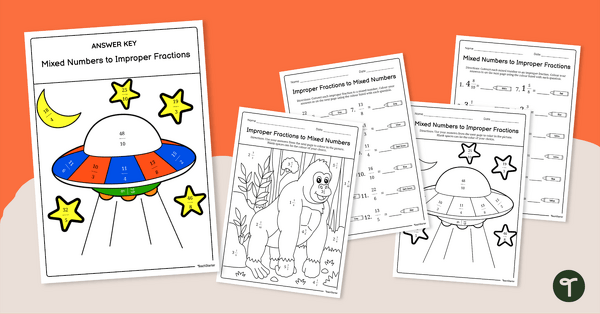Identify the first letter for each picture and then colour it in.
Consolidate students knowledge of initial sounds and letters with this worksheet.
Updated: 25 May 2023
Identify the first letter for each picture and then colour it in.
Non-Editable: PDF
Pages: 1 Page
Years: F - 2
Recognise and name all upper and lower case letters (graphemes) and know the most common sound that each letter representsElaborationsusing familiar and common letters in handwritten and digital communications (Skills: Literacy)identifying familiar a...
Recognise and name all upper- and lower-case letters (graphs) and know the most common sound that each letter represents
Recognise and name all upper- and lower-case letters and know the most common phoneme-grapheme correspondences (sound-letter relationships)

Identify the first letter for each picture and then colour it in.
Consolidate students knowledge of initial sounds and letters with this worksheet.
Recognise and name all upper and lower case letters (graphemes) and know the most common sound that each letter representsElaborationsusing familiar and common letters in handwritten and digital communications (Skills: Literacy)identifying familiar a...
Recognise and name all upper- and lower-case letters (graphs) and know the most common sound that each letter represents
Recognise and name all upper- and lower-case letters and know the most common phoneme-grapheme correspondences (sound-letter relationships)

We create premium quality, downloadable teaching resources for primary/elementary school teachers that make classrooms buzz!
Write a review to help other teachers and parents like yourself. If you'd like to request a change to this resource, or report an error, select the corresponding tab above.
Would you like something changed or customised on this resource? While our team makes every effort to complete change suggestions, we can't guarantee that every change will be completed.
Did you spot an error on this resource? Please let us know and we will fix it shortly.
Are you having trouble downloading or viewing this resource? Please try the following steps:
If you are still having difficulty, please visit the Teach Starter Help Desk or contact us .

Use a Christmas-themed colour the vowels worksheet to help your students differentiate between long and short vowel sounds.

Use these Christmas-themed long vowel and short vowel worksheets for a bit of Christmas fun in the classroom.

Use this Parts of Speech Colouring Activity as a back to school review activity with your students.

Use this set of colour by sight words worksheets to help students master the tricky elements in each word.

Use a colour by code Noun, Verb or Adjective worksheet to help students practise identifying parts of speech.

Use a Colour By Code Simple or Compound Sentence worksheet to help your students practise identifying simple and compound sentence types.

Use a Colour By Code Comma Splice Handout to practise identifying and correcting comma splices.

Practise identifying correct and incorrect comma use with a colour-by-code Comma Use Worksheet Pack.

Use our Fractions Greater Than 1 Worksheet Pack to give your students a fun way to practise converting between improper fractions and mixed numbers.

Use this set of colour-by-pronouns worksheets to help your students learn these important parts of speech.
Hello, I really like this resource and could see myself implementing it as a guided reading activity with my Foundation students. Any chance it could be customised to Vic Cursive font?
Hey Sharon, that sounds like a fantastic idea. Could I please ask that you make a change request on this page to get this resource progressed into being made.
I would love more activities similar to this!!!!
Hi there Domini, thank you for your comment. Did you know that you can request resources via our Request a Resource widget? Our requests are voted on by the TS community. If your request is popular and makes its way to the top of our list, we will create it for you! https://www.teachstarter.com/request-a-resource/